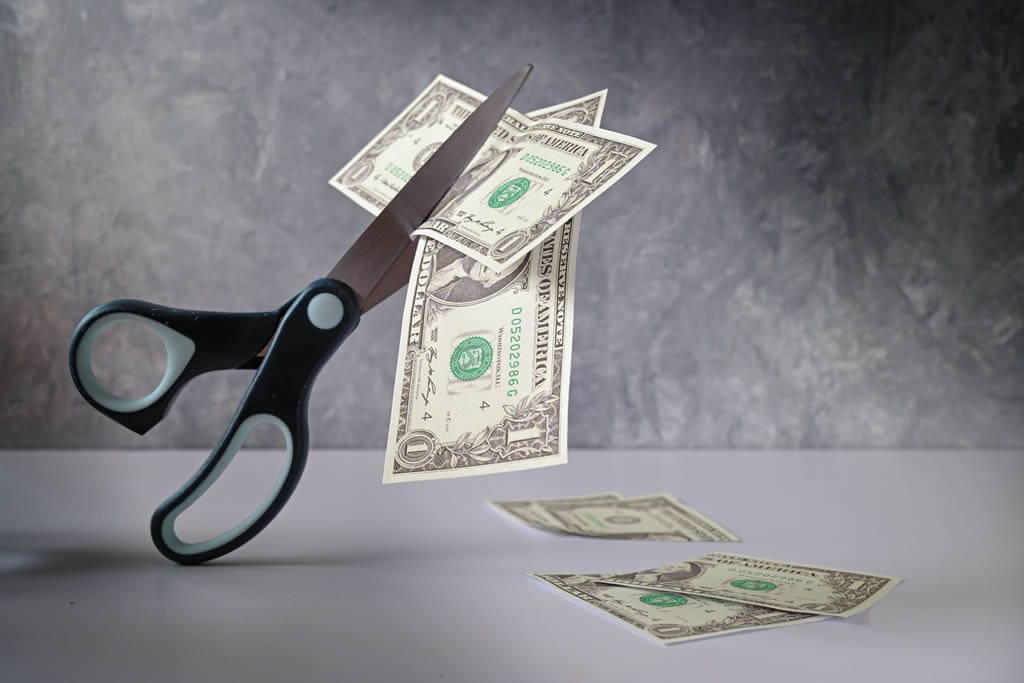Case Study: Trimming Fees, Boosting Returns
High portfolio fees can erode $1M+ investment returns, but precision trimming unlocks wealth. This case study, guided by 40+ years of fiduciary expertise, reveals how slashing fees and optimizing allocations boosted returns for a high-net-worth investor.
For investors and NIL athletes with $1 million or more, portfolio fees—from advisor commissions to fund expenses—can quietly drain your wealth, taking 1–2% each year. That’s $100,000–$200,000 lost annually on a $10M portfolio. In a year when stocks returned just 6–8%, these fees can easily cut your results in half.
On top of that, taxes on gains (20% federal, 3.8% NIIT, up to 13.3% state) and market swings make things worse. Cutting fees while fine-tuning your allocations takes real skill—but it’s one of the best ways to protect your gains and grow your wealth.
After more than four decades as a fiduciary advisor, my rule is simple: run your portfolio efficiently and trim every unnecessary cost. This case study shows how one investor cut fees and boosted returns, with five proven strategies you can use too.
The Cost of High Portfolio Fees
Portfolio fees come from advisor fees (0.5–2% of assets), fund expense ratios (0.1–1.5%), and trading costs (0.1–0.5% per trade). Morningstar found that portfolios with high fees (1.5% per year) lag low-fee portfolios (0.3%) by 1.2% a year—that’s $120,000 lost on $10 million over ten years.
Non-fiduciary advisors often push high-cost funds because they earn commissions. As a result, 60% of $1M+ investors overpay by $50,000 a year (Forbes, 2024). Taxes—especially capital gains and NIIT—take an even bigger bite when high-fee portfolios are constantly traded.
For NIL athletes, who may only earn for a few years, high fees can eat up their savings after their careers end. Vanguard reports that low-fee portfolios keep 90–95% of their returns, while high-fee ones lose 20–30%. The solution: use low-cost funds, tax efficiency, and smart allocations to protect your performance.
Case Study: The $10M Portfolio Fee Overhaul
In 2023, a 53-year-old fintech founder held $10 million: $5M in active funds (1.2% expense ratio), $3M in stocks, $1.5M in bonds, $500K in cash. Their advisor charged 1.5% ($150K per year), for a total of $270K in annual fees with fund costs.
After a market dip (15%), returns fell to 4%—just $130K after fees. A fiduciary advisor stepped in and switched $5M to low-cost ETFs (VTI, 0.03% expense ratio), saving $59K each year.
With a new advisor fee of just 0.3% ($30K), total costs dropped to $34K. Tax-loss harvesting offset $200K in gains for a $30K tax break. The new mix: $3M in dividend stocks (NOBL, 2.5% yield), $2M in munis (3.5% yield). By 2025, fees were just $35K, the portfolio grew to $11.2M, and annual returns hit 7.5%, or $400K a year—a $236K improvement over the old plan.
Five Elite Strategies for Trimming Fees and Boosting Returns
To get more from a $1M+ portfolio, try these fee-cutting strategies:
- Switch to Low-Cost ETFs: Ditch high-fee funds (1–1.5% expense ratio) for ETFs like VTI or VXUS (as low as 0.03%), saving over $100K a year on $10M.
- Use Fiduciary Advisors: Work with SEC-registered CFPs or RIAs charging just 0.2–0.5%—not 1–2%. On $5M, that’s a $100,000 annual savings.
- Automate Tax-Loss Harvesting: Robo-advisors like Betterment harvest up to $3,000 in annual losses to cut taxes by up to 20% and reinvest the savings.
- Choose Tax-Efficient Assets: Put 20–30% in munis or low-turnover ETFs (3–4% yield) to cut NIIT and state taxes, and keep more after-tax gains.
- Limit Trading Costs: Keep trading costs below 0.2% by using platforms like Schwab, and rebalance inside tax-advantaged accounts to avoid triggering gains taxes.
Actionable Tips for Investors
- Check Fees Every Quarter: Use Morningstar or YCharts to find all expenses and keep total costs under 0.3%. As the advisor says, “Fees are a leak—plug them fast.”
- Automate Low-Cost Rebalancing: Use Wealthfront or Schwab (0.25–0.28% AUM) for trades, saving up to 1% versus manual rebalancing.
- Pick a Fiduciary CFP: Make sure your advisor is truly working for you and not collecting commissions, which hurt 60% of investors (Forbes, 2024).
- Track Tax Efficiency: Use TurboTax to keep AGI below key limits for NIIT ($250K) or capital gains (20% above $553,850 for MFJ), and use munis to cut taxable income.
- Reinvest Your Fee Savings: Put every dollar you save in costs into growth funds or real estate to keep compounding returns at 6–8%.
Challenges and Considerations
Cutting fees isn’t always simple. Hidden costs—like 0.5–1% fund expenses—require a careful audit, since half of investors overpay without realizing it (Morningstar, 2024). Taxes on gains and NIIT add another layer of complexity, and 15% of trades face IRS wash-sale audits. Market swings can disrupt low-cost strategies. For NIL athletes, short careers mean every dollar in fees matters even more. Sometimes, low-fee funds can lag behind in bull markets, but the long-term advantage still goes to the low-cost approach. The best defense: use low-fee ETFs, optimize taxes, and stay alert for hidden costs. Don’t let complacency drain your portfolio—“Cut fees with a scalpel, or they cut your wealth.”
Conclusion
High portfolio fees can quietly eat away at your returns, but trimming them is one of the best ways to protect your wealth. With the right approach—low-cost ETFs, fiduciary advisors, tax harvesting, and reinvesting savings—you can drive stronger results. The fintech founder’s $236K yearly savings and $11.2M portfolio prove the power of these strategies. Book a free Strategy Call at freedomcapitaladvisors.com to get your own portfolio running lean. As the advisor says, “Your wealth is your engine—run it lean and mean.”
Sources
- Morningstar. (2024). The Impact of Fees on Portfolio Performance. https://www.morningstar.com/insights/fees-portfolio-performance
- Vanguard. (2024). Low-Cost Investing for High-Net-Worth Portfolios. https://www.vanguard.com/insights/low-cost-investing
- IRS. (2025). Publication 550: Investment Income and Expenses. https://www.irs.gov/publications/p550
- Forbes. (2024). Hidden Costs of Non-Fiduciary Advisors. https://www.forbes.com/sites/wealth/2024/02/15/non-fiduciary-costs/







